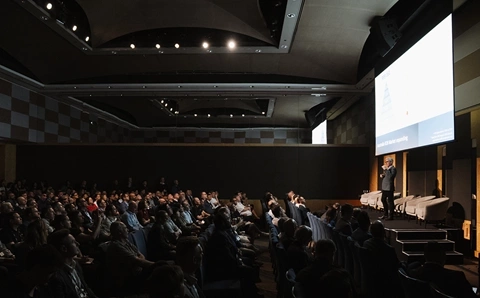They need what you have to sell them, but now they are not sure if they really want it. There’s only one thing left to do -- play the price card.
Few IT channel sales people would have gotten far into their careers without encountering pressure to win business by cutting prices.
Even fewer would have resisted. However, it is the ability to sell a deal based on its value that is setting the great salespeople apart from the discounters.
Stuart Dredge has spent a lot of time looking at what sets the great salespeople apart from the rest.
As general manager of the research-based sales process consultancy Chandler McLeod Topline Solutions, Dredge has been working in collaboration with Queensland-based Southern Cross University on a longitudinal study of the relationships between sales process and sales performance. The study has investigated more than 200 large Australian companies.
“The research says that what converts demand today are perceptions of value,” Dredge says. “Those organisations that understand their value proposition, and from that can build a business case and articulate that business case, are outperforming those who can’t.”
“If they can’t argue a business case, there’s only one door left, and it’s the price door. And history has shown over and over and over again that those companies that succumb and give up on price become someone else’s lunch.”
In an industry where products are being commoditised at a rapid rate, building a business based on higher margins can appear to be a risky undertaking. Nonetheless, value-based business underpins many modern channel organisations.
The chief executive officer at the Brisbane-based IT services company Clariti, Bruce McCurdy, says his business has no choice but to offer a value-based proposition.
“We’re selling the same products as everyone else out there,” McCurdy says. “And it really comes down to who’s got the best sales spiel, who’s got the better reputation, or who’s got a team of good engineers. In the infrastructure space everyone is playing a fairly similar game, from small operations up to the big ones.” To combat this, Clariti has developed specific methodologies for project management based around Microsoft and Citrix technology to set it apart from its competition.
This year Clariti commissioned an extensive market research program, including client interviews and mediated focus groups, to determine exactly what customers want. The research showed that the key attributes that customers value are trust, honesty and openness.
“If they can trust the person they are doing business with -- that the price is the honest bottom line and it is a good value proposition -- that is what they are looking for,” McCurdy says. “But what we found through the process is they needed to have a relationship with the company in its entirety, so that when the salesperson left and someone else came in, the relationship continued.”
A similar situation exists even in retail, where maintaining margins is an increasingly difficult proposition, thanks to customers becoming better educated about prices and options.
The general manager for computers and communications at Harvey Norman, John Slack-Smith, maintains his company will never fall back entirely to a price position, because retailers who do so eventually go broke.
“The number one asset that we have, as most companies do, is the name on the front door,” says Slack-Smith.
“We are all about meeting with the customer and finding out what they are looking for and what they want to achieve through purchasing a product. And it is our jobs to ensure that we give to them the information and the products that meet what they are looking to achieve. So we go to extensive lengths with our people to ensure that there is both a constant upgrading of their product knowledge skills, and their interpersonal skills.”
According to Hugh Macfarlane, the managing partner at the Melbourne-based sales consulting group MathMarketing, a common problem in technology is that sellers get too caught up in the technical capabilities of their products, rather than taking the time to assess the needs of the potential client. He says ultimately they fail to understand the buyer’s problem and why it is that they need their value.
“Understanding what the customer’s pain is takes no longer than pulling out your brochure,” Macfarlane says. “It’s a salesperson’s job to understand how that plays out per client. It is a questioning technique that you can train for -- continuing to ask ‘why?’. That consequential logic flow is a technique that people can understand, but they need to be trained in it to follow it in the cut and thrust of a sales call.” Macfarlane notes that salespeople are often capable of meeting the needs of the client, but fail to motivate them to do anything about it.
“If you understand the problem from the customer’s perspective, then you’ll understand why they want the value, but you’ll also be able to help the buyer understand why they should act, and the cost of not acting.”
“If you don’t understand why the customer should be buying something, then you simply put more sugar on it. And that’s really lazy selling. It is all about failing to understand why it is in the best interest for the customer to act, and helping them to understand that. And if you don’t know the problem the customer is going to face if they don’t act, then all you are going to talk about is your product.”
Gil Thew has spent much of his working life in value-added sales, with companies such as the Apple reseller Logical Solutions, and later as the head of local operations for Sun Microsystems’ software arm, SunSoft.
Now Thew finds himself trying to teach others what he has learned as head of the sales consulting company Wolken.
“You’ve got to understand the customer’s problem so well that they will pay at a premium to get you,” Thew says. “The important thing about a professional salesperson is they don’t qualify just on price. They qualify on their having a compelling reason to buy, and having the right product and right time frame.”
“And if the answer to any of those is no, they walk away. The amateurs think you have to win every deal that you go for. But you don’t -- you pick the deals you can go for.”
According to Thew, the first key issue in selling value is understanding the customer’s decision-making process. Those companies that can map their offering against the decision-making process of an organisation become price-makers, rather than just order takers. Thew says that in most organisations there are multiple personnel that will influence the outcome of a sales pitch, including finance and procurement, as well as the IT manager and chief executive. To focus on one is to fail to take into account the role of others in influencing the outcome, and is a common factor in losing business.
Also, there can be a big difference between what is specified in a tender, and what is actually purchased, as the requirements specified are often merely the minimum that the customer believes they need to achieve their goal. “Rarely does a good CFO want the cheapest deal -- they want value,” Thew says. “So they start working on total value, with minimum risk. And to them, higher price gives them that. This is what the value salesman works on -- he finds out what the individuals in the decision-making process want.”
Thew says it is also important to qualify whether a decision is even going to be made. Questions to ask include: what are they making a decision on, what is their budget, when will they make their decision? The salesperson will also benefit if they can demonstrate that every month spent in bargaining and negotiation is costing the client money.
“You are wasting your time talking to someone who is not going to make a decision, and no amount of discounting is going to convince them. But if somebody is asking ‘how soon’, rather than ‘how much’, then you can set prices.”
Discounting the sales profession
Discounting erodes margin, affecting the health of the overall business. But the temptation to cut prices is easy to succumb to when the client starts dithering over a deal.
So what is it that enables one salesperson to convince the client of the value of the deal, whereas another wilts under pressure and drops the price?
The general manager for sales and marketing at the Melbourne-based integrator Brennan IT, Matthew Lovegrove, has seen examples of both types of sales person. The latter sales behaviour he ascribes to a lack of confidence in either themselves or their product. But even when the salesperson understands the requirements, Lovegrove says many are too afraid to ask the required follow-up questions, such as what the budget is, and when are they looking to spend it.
“[As a manger] you always want to try and knock that out of people, because it does become an ingrained behaviour,” Lovegrove says. “It means making sure you train your sales people so they can talk about your value-add -- what is it that your product has over competitors that are charging less. So you have to be able to arm them with those explanations for why there is a premium for your products.”
“And you need to help them understand that if the customer is providing an objection, it just means that you haven’t uncovered something or addressed something properly.”
Some companies even go so far as to open their books to their clients, in order to demonstrate exactly how much margin they are making. The NSW state manager for sales at Dimension Data, Michelle Tea, has at times asked trusted clients how much margin they think her company is making off their deal. “They actually always say higher than what we actually make,” Tea says.
“Then we will look at all the things that they absolutely want, such as warehousing, logistics, staging or whatever, and cost them out. So the deal is priced per item. That gives the customer a level of trust with us, and they like that.”
So-called drive-by shootings still happen, where the client tries to pressure a supplier to match the cheapest quote. But by opening the books to a client, Tea says Dimension Data has been able to demonstrate the true cost of its value-add, and retain a premium price for component pieces of a deal.
“We did get shopped on price. We did have to drop out price a little. But we didn’t get shopped to the bottom level price.”
Building value
At Brennan IT, Lovegrove has implemented a 10-step sales methodology, to guide his salespeople through the value-added sales process. This formalisation or process assists in eliminating the “luck” component from selling by ensuring greater consistency.
One of the keys items is research, with the first step being the creation of a pre-meeting plan. The methodology then moves through other stages, such as uncovering needs, discussing budgets and meeting with decision makers.
But according to Tea, nothing beats longevity when it comes to building a value-based sales relationship. “If you don’t have a long-term relationship and haven’t been involved with the sale for many months and been able to demonstrate value through that cycle, then the only thing you can really do is drop the price, because a lot of people can offer a similar type of value to you,” Tea says. “If you don’t have that previous relationship, and have demonstrated your customer service and demonstrated some of the skills of the company, then it is very hard to demonstrate that value.”
But not impossible. Tea says that when it comes to greenfield clients, her approach is to start small, and identify the one thing that the client is having the most trouble with.
“They start you out on a little thing, and then they give you another thing, and another, and another. A lot of it is about patience. You just have to keep going back. And they’ll open up more and more about their problems. Because you want to talk to a customer about their problems, not what you can provide them. You’ve got to build trust with a customer. Once they trust you, they tell you everything. And that’s how you build value.”
If the days of the price-based sale are gone, then so too are those of the “ice-to-the-Eskimos” type of salesperson. McCurdy says the high pressure sales approach taken in the 1990s is not appropriate now.
“I was an IT manager in the 1990s and I saw heaps of these guys coming through,” McCurdy says. “You can’t sell in that way any more. Your IT manager these days is more educated -- he is not a programmer who has suddenly become the IT manager. He has business degrees and a finance background. He understands business issues. You have to work with these people, you have to find and understand their pain points.”
“So the barnstorming approach is gone, and it is definitely a relationship-style approach. That drags the sales process on a lot longer, but everybody comes up with a win. The customer gets what they really need, and if the salesperson takes the time to listen, they can come out with a profitable business deal.”
Chandler McLeod’s Dredge believes the notion that there is some inherent quality that makes a person good at sales died 20 years ago.
“That only worked when demand exceeded supply for goods and services,” Dredge says. “What makes for success in sales today is a person’s ability to deal analytically with issues. They have to have the breadth of marketing knowledge and understand the nature and the detail about the demand to which they are responding, and be able to construct a business case from that. And finally, they have to have the ability to communicate that both verbally and in written form.”
DiData’s Tea manages a sales team of 20 in NSW, and says generally that the more seasoned campaigners are able to demonstrate value to a client fairly easily and in more a innovative fashion than their less experienced counterparts. "Some people just have it, and some people don’t,” Tea says.
“The way that people learn to sell value is to learn to understand what the solutions are actually about, what cost benefit people can get out of the solution. So they need to have a reasonably commercial business mind, so that they can look at a P&L [profit and loss statement] and understand what the impact to that customer’s business is. If you have that sort of knowledge, it makes it much easier.”
Tea herself has an accounting background, and says she spends much of her time selling value from a business perspective, in terms of what it will do to their productivity and bottom line.
Most companies are also rewarding their sales people on the basis of profitability, not revenue.
“IT retailing is a competitive business,” says Harvey Norman’s Slack-Smith. “We get competitive quotes from customers daily, and we will turn up and be as competitive as we can inside the shops. And we will never back away from that -- we can’t -- because the customer is the one that is dictating what prices products are sold for. But the company is built around profit, not around sales volumes.”
“Now if we have members of the sales team that are reverting to price and price alone, and that is a consistent trait of the way they are conducing the business inside the store, we would normally look to work with that person, provide extra training and one-on-one coaching.”
Got selling skills?
Understandably, these types of salespeople are not easy to bring across.
Tea says Dimension Data instead often recruits new sales staff in its enterprise area from the various market segments that it is targeting. “Domain expertise is something that we very much need, especially when we are selling things like our managed services portfolios, and we need to understand the outcomes that the customer wants.”
The chief executive of specialist security distributor Firewall Systems, Scott Frew, says selecting a good value-oriented salesperson requires getting a feel for their personality. He says it is less about their formal education, and more about their motivation.
“I typically try and employ guys outside of the industry, because the industry is starting to settle and is not as aggressive as it used to be,” Frew says.
“The last guy I employed came out of industrial plastics, and he has been fantastic. I’m just looking for someone who genuinely wants to look after the customer.”
Lovegrove says that he is looking to double Brennan IT’s sales team to 10, and will be seeking candidates who really have an understanding of solution selling. He has also chosen in the past to hire people who do not have an IT background.
“I’m looking for someone who has some business acumen, when they can have a conversation with the client and understand that business,” Lovegrove says. “Because only if you understand what the client’s needs are, only then can you put together a solution that addresses those needs.”
For Harvey-Norman, Slack-Smith says he looks for good communication skills. “When you have people with both of those traits [business acumen and good communication], you can do something with them. Because when you are in the retail business dealing with people from all walks of life, you’ve got to be able to be flexible and open in the way you approach people."
Slack-Smith says this also leads him to hire people whose expertise lies outside of traditional retailing. He has even hired a professional hairdresser to join the same team. “He had spent the last 10 years talking to people. And he was an outstanding success from the very first work.”



.jpg&h=142&w=230&c=1&s=1)

.png&h=142&w=230&c=1&s=1)





.jpg&w=100&c=1&s=0)
_(8).jpg&w=100&c=1&s=0)










